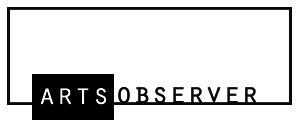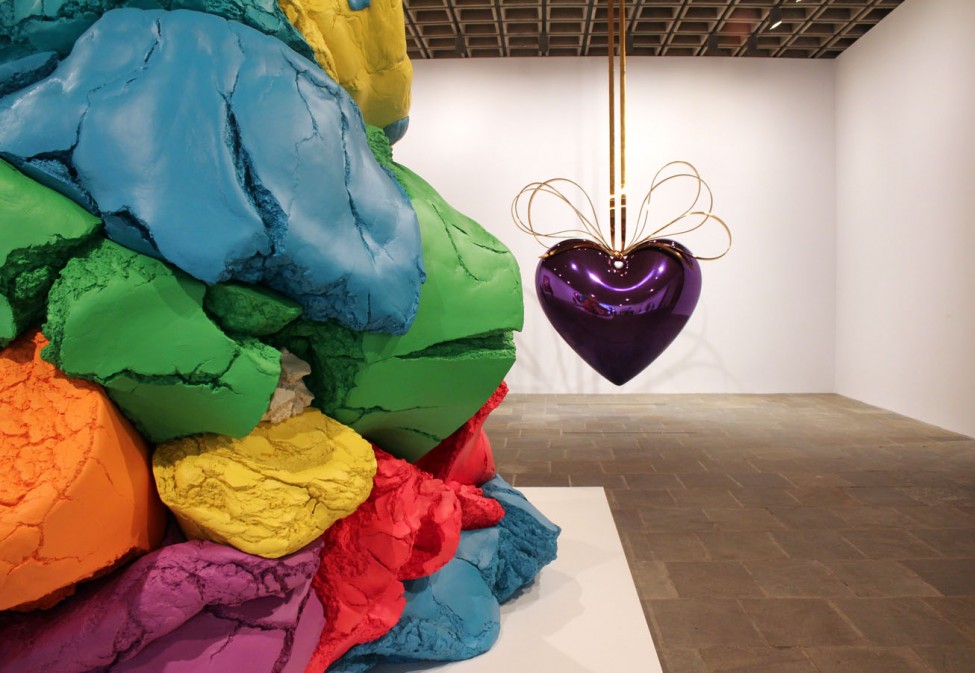NEW YORK—There is a colorful mound of Play-Doh, the Incredible Hulk, a Liberty Bell, Michael Jackson and Bubbles, basketballs floating in water tanks and vacuum cleaners in acrylic fluorescent-lit display boxes. The Whitney Museum is showcasing the work of Jeff Koons and whether you consider it absurd or genius, art or farce, there is a lot to take in.
Famous for creating outsized fabricated objects, Koons broke auction records last year when his whimsical reflective-surface “Balloon Dog (Orange)” sold for more than $58 million. The November 2013 sale at Christie’s made the sculpture the most expensive work of art by a living artist.
Despite this and countless other art market achievements, Koons—who garners both praise and derision from critics—has never been the subject of a career survey until now. “Jeff Koons: A Retrospective” examines the full scope of his practice. The show includes more than 150 paintings and sculpture created since 1978 and features a yellow balloon dog and Made in Heaven, an explicit series starring Koons that is intended to offer “emancipation from the shame of sex.”
Jerry Saltz offers his comprehensive thoughts about Koons, his work and the exhibition in a recent New York magazine review.

“Balloon Dog (Yellow),” 1994-2000 (mirror-polished stainless steel with transparent color coating, one of five unique versions), with “Moon (Light Pink),” 1995-2000 (mirror-polished stainless steel with transparent color coating, one of five unique versions) in the background.
“Throughout his career, he has pioneered new approaches to the readymade, tested the boundaries between advanced art and mass culture, challenged the limits of industrial fabrication, and transformed the relationship of artists to the cult of celebrity and the global market,” the Whitney notes in describing the Koons exhibit. The retrospective revisits “all of his most iconic works and significant series in a chronological narrative.”
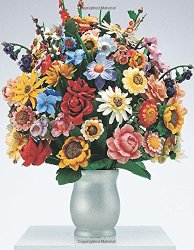 Koons currently has a presence throughout the city. His “Split Rocker” is installed at Rockefeller Center, and Gagosian is touting the artist’s work at its Upper East Side gallery near the Whitney.
Koons currently has a presence throughout the city. His “Split Rocker” is installed at Rockefeller Center, and Gagosian is touting the artist’s work at its Upper East Side gallery near the Whitney.
The Koons exhibition is occupying almost the entire museum. This is the first time a single artist has dominated the building and the exhibition will be the final presentation on Madison Avenue before museum inaugurates its new space in the Meatpacking District in 2015.
“Jeff Koons: A Retrospective” is on view from June 27 to Oct. 19, 2014 and is complemented by a 288-page catalogue (shown above right).
All photos by Arts Observer

“Play-Doh,” 1994-2014 (polychromed aluminum, one of five unique versions), with “Moon” and “Cake” in the background.

Detail of “Cake,” 1995-1997 (oil on canvas).

“Cat on a Clothesline (Aqua),” 1994-2001 (polyethylene, one of five unique versions).

From left, “Dutch Couple,” 2007 (oil on canvas) and “Gorilla,” 2006-2011 (granite, edition number 1/3).

Installation view of “Hulk (Organ),” 2004-2014 (polychromed bronzed and mixed media, edition number 1/3).

“Liberty Bell,” 2006-2014 (bronze, wood, wrought iron, cast iron, steel, and polychrome, edition number 1/3).
There is an interesting story behind Koons’ motivation to create this replica of the Liberty Bell. The artist grew up in south central Pennsylvania and was first exposed to art and American historical objects at Philadelphia museums and cultural sites.
According to the Whitney, “This sculpture represents one of the first times that he has created an ‘altered readymade’ in the very same materials as the original.”

“Balloon Venus (Orange),” 2008-2012 (mirror-polished stainless steel with transparent color coating, one of five unique versions.

“Metallic Venus,” 2010-2012 (mirror-polished stainless steel with transparent color coating and live flowering plants).

Works from Koons’ Statuary series, including “Rabbit,” 1986 (stainless steel) at center.

Installation view of Banality series with, from left, “St. John the Baptist, 1988 (porcelain, edition number 3/3); “Buster Keaton,” 1988 (polychromed wood, edition number 3/3); “Naked,” 1988 (porcelain, edition number 1/3); “Ushering in Banality,” 1988 (polychromed wood, edition number 2/3); and “Michael Jackson and Bubbles.”

“Michael Jackson and Bubbles,” 1988 (porcelain, edition number 1/3).

Installation view of Banality series with “Bear and Policeman,” 1988 (polychromed wood, artist’s proof) in the foreground.

Detail of “String of Puppies,” 1988 (polychromed wood, artist’s proof).

“Large Vase of Flowers,” 1991 (polychromed wood, edition number 2/3).
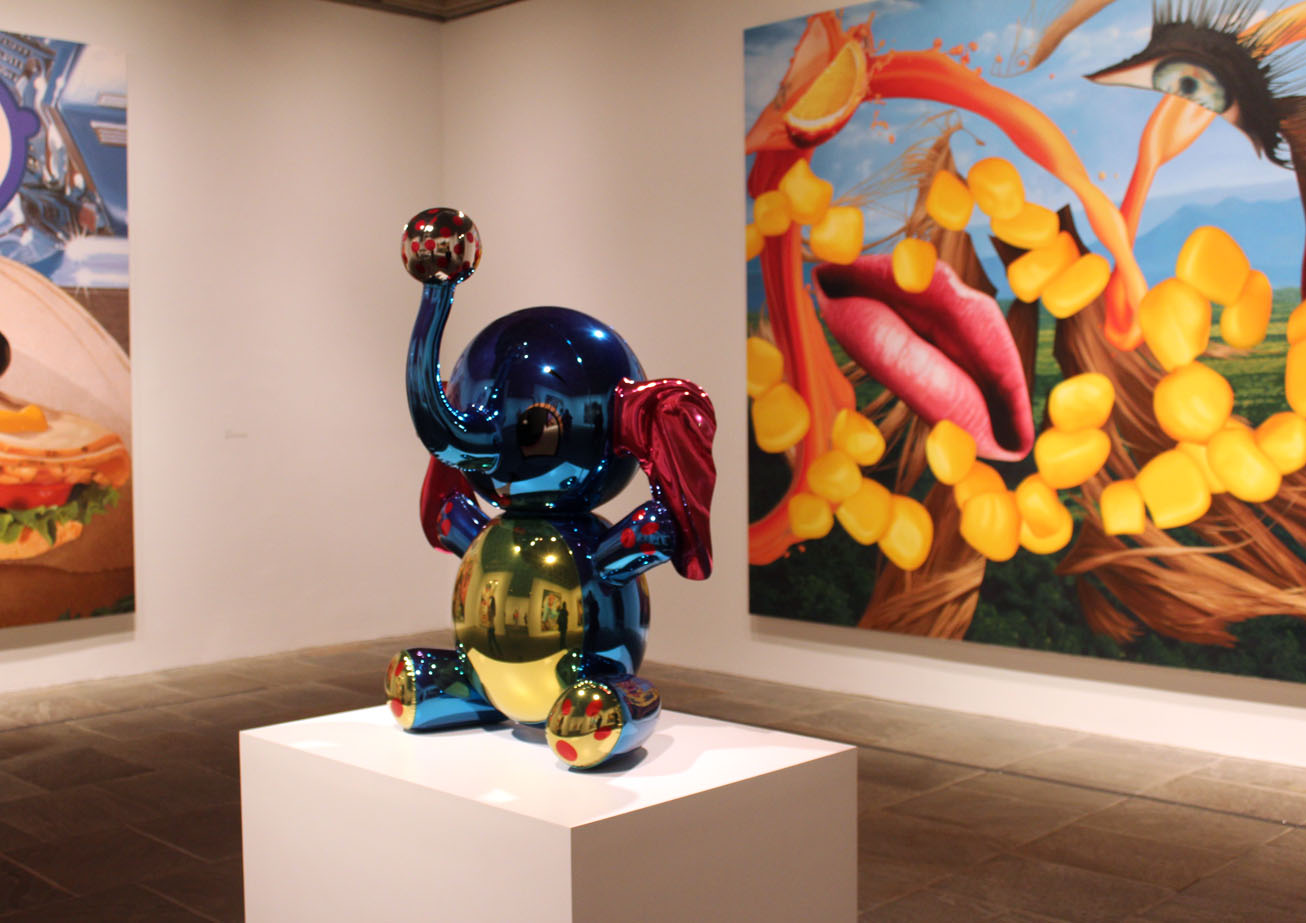
“Elephant,” 2003 (mirror-polished stainless steel with transparent color coating, edition number 3/3), with “Lips,” 2000 (oil on canvas) in the background.

“Poodle,” 1991 (polychromed wood, edition number 2/3).

“Aqualung,” 1985 (bronze, edition number 3/3), with “Two Ball 50/50 Tank (Spalding Dr. J Silver Series, Wilson Supershot), 1985 (glass, steel, distilled water, and two basketballs) in background.
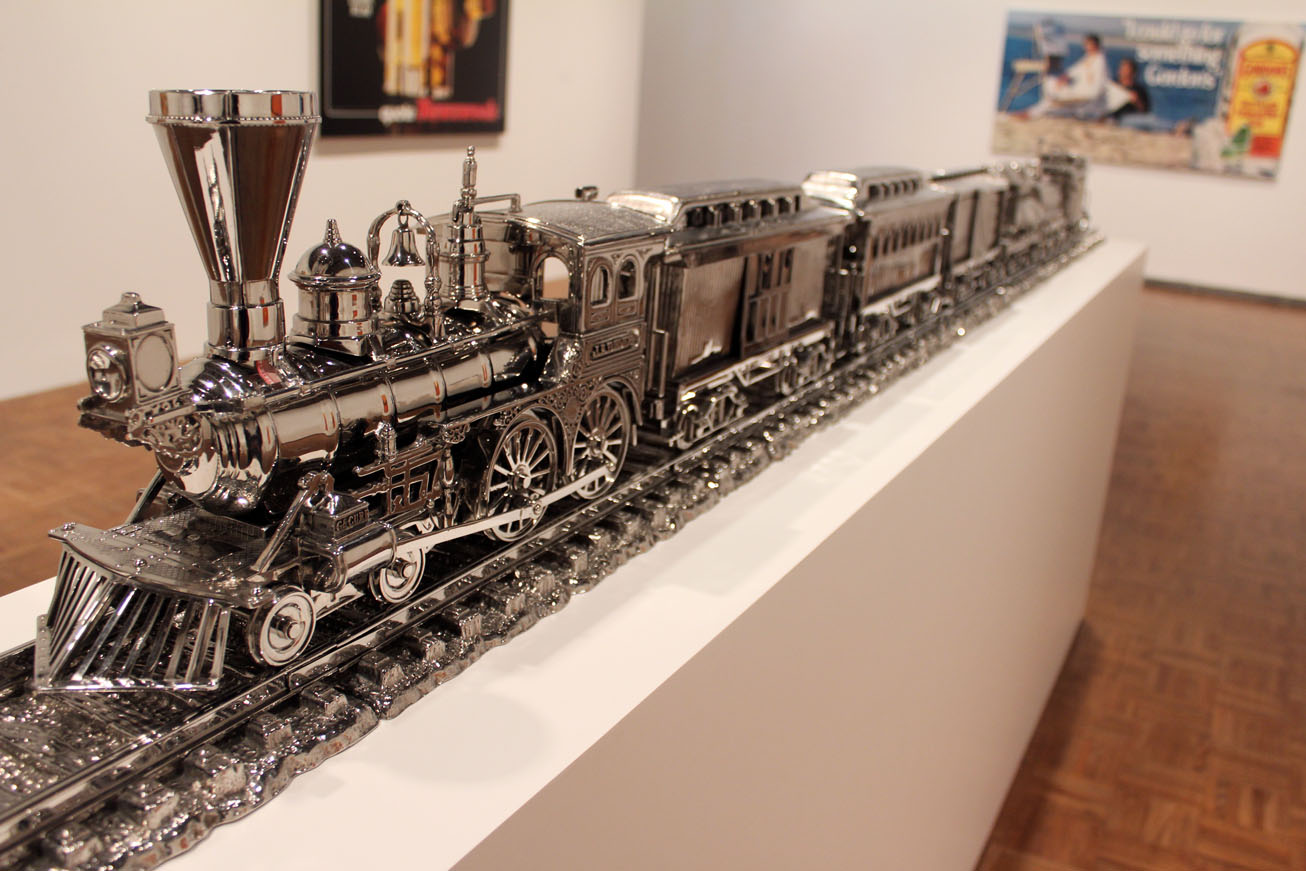
“Jim Beam — J.B. Turner Train,” 1986 (stainless steel and bourbon, edition number 3/3).

“Split-Rocker (Orange/Red),” 1999 (polychromed aluminum, one of four unique versions). In the background, from left, “Bear (Gold),” 1999 (crystal glass, mirrored glass, carbon fiber, foam, colored plastic interlayer, and stainless steel) and “Kangaroo (Red),” 1999 (crystal glass, mirrored glass, carbon fiber, foam, colored plastic interlayer, and stainless steel).
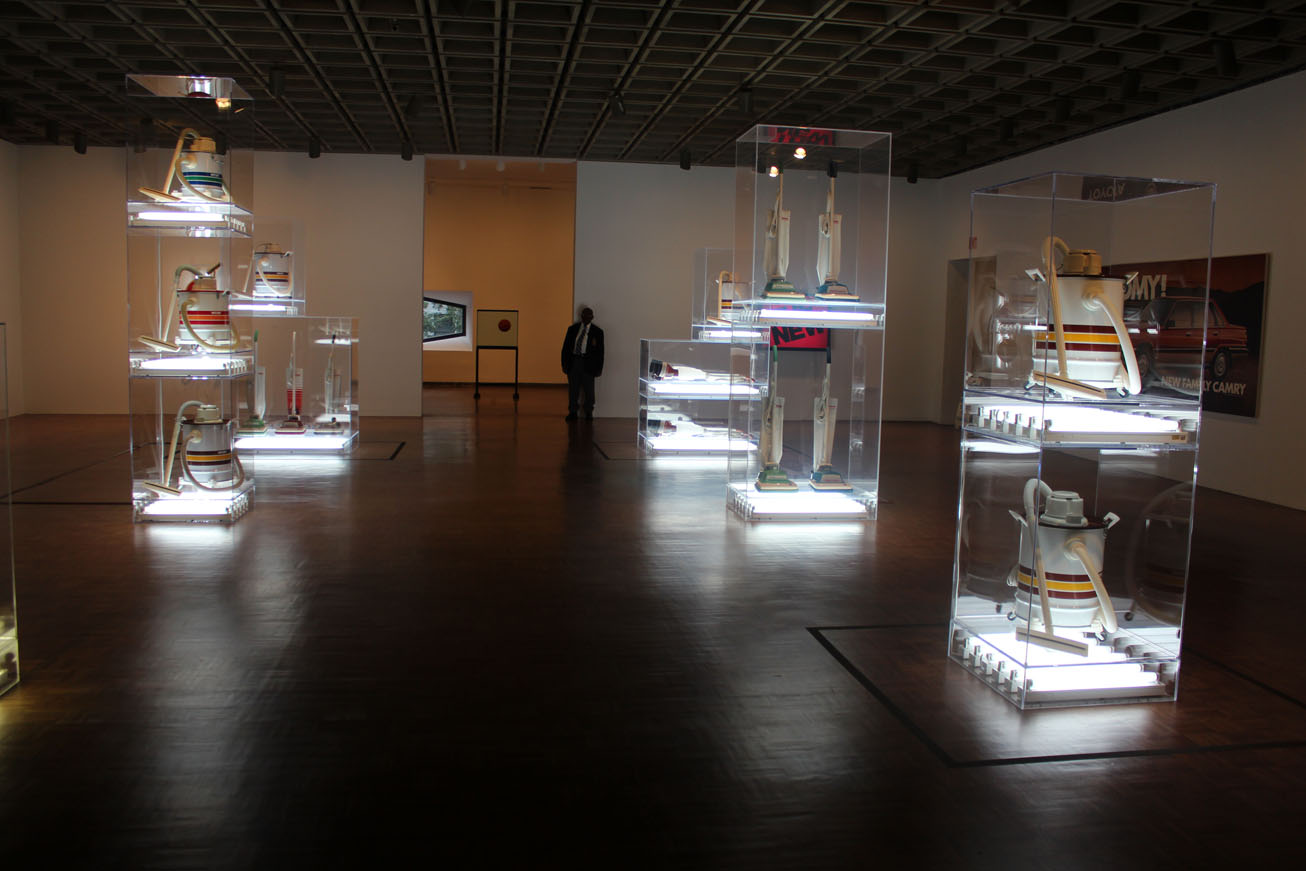
From The New series, installation view of vacuum cleaners.

“Popeye,” 2009-2012 (granite and live flowering plants, edition number 2/3).
